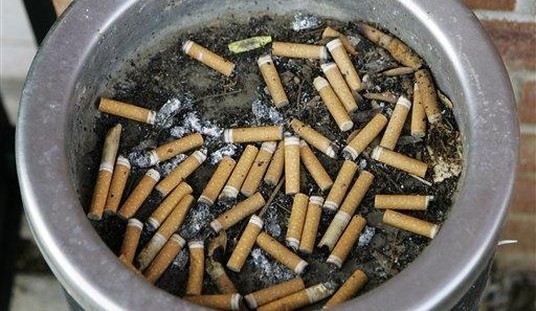I have written regularly about COVID-19, new research on the virus, and potential treatments over the past year. I also understand the sting of censorship thanks to the Facebook fact-checkers and I have had to retract articles based on peer-reviewed research because they did not align with the WHO and the CDC. This is a strange standard since those two agencies have often given conflicting messages. While our health bureaucracy still pushes remdesivir as a primary treatment, the WHO has recommended against its use. Oddly, the global agency can’t replicate the results of the NIH study run by one Dr. Anthony Fauci. Color me shocked. That is just one example.
So, most of my COVID-19 writing now resides behind the VIP paywall. The final straw was the Facebook fact-checkers telling me I interpreted a New York Times article from last year incorrectly when I quoted the researchers directly from the article. It had to do with PCR test oversensitivity. All available research asserts that doctors should not interpret these tests in isolation, that the tests are not indicative of much in the absence of COVID-19 symptoms, and that they do not indicate a replication-competent virus at a cycle threshold (Ct) of over 30. IF I were to post that sentence on Twitter, I could get suspended.
Yet, when I inquired with the FDA about the Ct level and reference range required to obtain an Emergency Use Authorization (EUA) for a COVID-19 PCR test, this is what their media representatives told me:
Generally speaking, an authorized test’s labeling details the cycle threshold (Ct) values for the individual test. The FDA does not use a standard Ct value as a comparator in reviewing EUA requests for molecular tests. The appropriate Ct value is determined based on the test’s intended use and processing procedures. There are tests that have been authorized with a cutoff of 45Ct. For such authorizations, the test developers established the performance of their tests using a Ct cutoff of 45 cycles.
When they sent me the answer to their frequently-asked question, I was even more confused, even though I know what all the jargon means (emphasis mine):
“Ct values indicate the number of amplification cycles needed to reach the threshold at which a molecular diagnostic test can detect a positive signal. Ct values are not comparable between tests and may not be comparable between different lots of the same test, as they are dependent on various factors such as the specimen collection, storage, transport, time from collection, nucleic acid target, primers and probes, extraction method, amplification method, instruments used, etc. Therefore, if the same sample from an individual is tested with two different tests, or even the same test from different lots, they are likely to return different Ct values, even if both tests return a ‘positive’ test result.”
This variability could be why the WHO put out precise guidance about using PCR tests that explicitly says they are a single data point in an entire clinical picture (emphasis mine):
WHO reminds IVD [in-vitro diagnostic] users that disease prevalence alters the predictive value of test results; as disease prevalence decreases, the risk of false positive increases (2). This means that the probability that a person who has a positive result (SARS-CoV-2 detected) is truly infected with SARS-CoV-2 decreases as prevalence decreases, irrespective of the claimed specificity.
Most PCR assays are indicated as an aid for diagnosis, therefore, health care providers must consider any result in combination with timing of sampling, specimen type, assay specifics, clinical observations, patient history, confirmed status of any contacts, and epidemiological information.
In short, both the FDA and the WHO say PCR assays are not diagnostic. Yet, that is how the United States is using them, and we have locked down states, schools, and small businesses because of “cases,” which are simply positive tests that have wide variability. Most of the tests are not done in a medical provider’s office where a doctor can evaluate them for the Ct against the patient’s clinical presentation, history, contacts, and community prevalence information. Most people I know got their results from an app without ever seeing a doctor who had their test results in hand. However, if I published this for public consumption, it would run the risk of censorship.
All of this really hit home when I attempted to watch an interview with Dr. Jay Bhattacharya, a well-regarded doctor, professor, and health policy expert at Stanford University. He advised Governor Ron DeSantis on Florida’s COVID-19 response. However, his perspective on the national response to COVID-19 directly opposes the health bureaucracy’s approach. YouTube removed DeSantis’s panel with Bhattacharya and several other advisors. The platform’s justification was that the committee put out “misinformation.”
When I tried to watch the latest interview with him, I could only see the first ten minutes. An acquaintance of mine from The Epoch Times named Jan Jekielek conducts in-depth, thoughtful interviews for a series called American Thought Leaders. The Show’s YouTube channel was demonetized a few weeks ago, and rather than risk another strike related to COVID-19 information, the entire interview is now behind a paywall.
Bhattacharya shared research statistics, global predictions from the U.N., and other verifiable COVID-19 information in the first ten minutes. In my writing, I share peer-reviewed research and additional verifiable information. For fear of censorship or outright ban, The Epoch Times and I both put this dissenting information behind a paywall. How much information are our political leaders, school leaders, and individual citizens missing to make the best decisions possible, not just related to the pandemic but also civic life?
It bears consideration. Florida had one of the best COVID-19 responses in the country from a health policy and outcome perspective. Yet, you are not allowed to listen to an in-depth discussion with one of the governor’s primary advisors on a public platform. How Orwellian is that?










